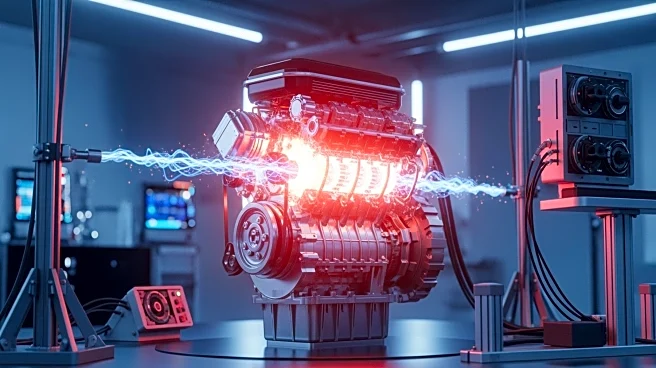What's Happening?
Researchers at King’s College London have developed the world’s hottest and smallest engine, achieving temperatures of 10 million Kelvins, which is hotter than the Sun’s corona. This microscopic engine is created
by trapping a microparticle in a near-vacuum setup known as a Paul trap, where electrodes are used to levitate the particle. By applying a noisy voltage, the particle jiggles, causing significant temperature increases. The engine exhibits unusual thermodynamic behaviors, sometimes defying basic laws by producing more power than the energy consumed. These findings are detailed in a forthcoming paper in Physical Review Letters.
Why It's Important?
The development of this microscopic engine has significant implications for understanding thermodynamics at a micro level, which could lead to advancements in designing more efficient engines and experiments. The engine's ability to simulate microscopic phenomena, such as protein folding, offers potential breakthroughs in biological and medical research. This could enhance the understanding of metabolic processes and improve computational models that struggle with the divergent timescales of atomic movements. The research highlights the potential for microscopic tools to solve complex mysteries in physics and biology.
What's Next?
While the engine is unlikely to be used in everyday applications like cars or household appliances, its theoretical applications are promising. Researchers plan to use the engine to simulate other microscopic phenomena, potentially leading to new insights in various scientific fields. The study opens avenues for further exploration of microscopic thermodynamics and its applications in simulating biological processes, which could revolutionize fields such as medicine and environmental science.
Beyond the Headlines
The study underscores the peculiar nature of microscopic physics, where traditional thermodynamic laws may not always apply. This challenges existing scientific paradigms and suggests that new models may be needed to fully understand and harness these phenomena. The research also raises questions about the potential for microscopic engines to influence future technological developments, particularly in fields requiring precise control at the atomic level.











